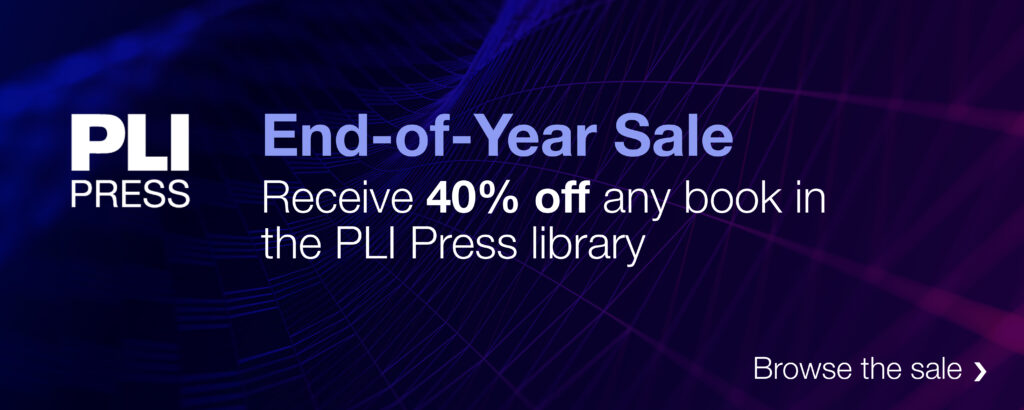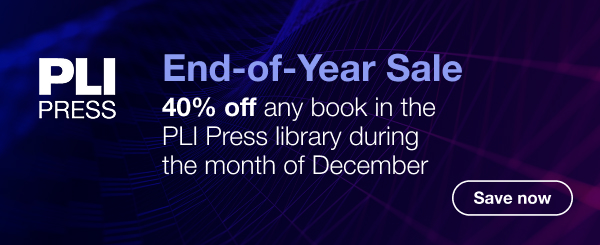
Browse our collection today and save big now through the end of December!

Browse our collection today and save big now through the end of December!

Browse our collection today and save big now through the end of December!

Fashion Law and Business: Brands & Retailers (Third Edition) provides clear guidance on the wide range of legal and business issues faced by fashion industry participants, including designers, suppliers, manufacturers of apparel and accessories, retailers, and emerging entrepreneurs. Written by three of America’s leading fashion and retail law authorities, the new edition incorporates coverage of AI as well as new discussion of sustainability and relevant rules of environmental law to provide a comprehensive guide to the issues affecting the fashion industry today.
Readers will learn the considerations involved in starting a company in the fashion industry, including:
Testimonials:
“A comprehensive guide that clearly addresses, in an approachable manner, all facets of law in the retail industry. Fashion Law and Business is unique in its global insider’s view and thorough understanding of the nuanced retail industry.”
–Kelly Koyama-Garcia, Retail Brand General Counsel
“…[T]his guide goes beyond the expected and usual topics to focus on key practice areas such as manufacturing, sustainability, real estate, and employment law. This publication is a must-have for any modern fashion lawyer who seeks to be well-rounded in law and business.”
–Lisa Keith, Executive Vice President & General Counsel, Steve Madden, Ltd.
“Fashion Law and Business is THE go-to resource for any (and every) fashion law practitioner, as it masterfully blends real-world industry challenges with insightful legal analysis.”
–Danielle Garno, Adjunct Professor in Fashion Law at the University of Miami School of Law and Partner, Daniel Ebeling Maccia & Cohen
“In an ever more rapidly evolving world where brands can take fashion they see on the street (or social media) and turn it into commercial production orders within hours, it is more important than ever to have a good understanding of the legal rules of the road. This casebook is an indispensable resource for designers, brands, and the ecosystem of partners who work with them.”
–Craig Fleishman, General Counsel of MycoWorks, Inc., formerly General Counsel to Rebecca Minkoff LLC
Order a print copy today.
PLI PLUS subscribers can access this title through their subscription.
PLI PLUS offers unlimited electronic access to more than 4,500 downloadable, searchable, and editable legal forms ready for use in your practice. In an effort to highlight this unique content type, we’ve selected one form per month and made it available for anyone to download for free – no subscription required.
August’s free form:
Memorandum to Employees Advising Them of Investigation
More information about Legal Forms & Checklists:
Download a PDF flyer of this post to share with colleagues: Most Popular Books on PLI PLUS in 2024. See also the Top 10 Most Downloaded Forms on PLI PLUS in 2024.
The tallies are in! Here are the books PLI PLUS users are accessing the most in 2024 so far…
Download a PDF flyer of this post to share with colleagues: Popular Books on PLI PLUS. See also the Top 10 Most Popular Forms So Far in 2024.

Fragomen on Immigration Fundamentals reveals the nuances of U.S. immigration law and practice along with the agency, legislative, and executive policies shaping the current environment for immigrants and asylum seekers. Packed with practical tips for employment-based and family-based immigration, avenues to permanent residence, naturalization obstacles, statutory admission denials, and the administrative and judicial review of unfavorable decisions, the book also features templatized immigration forms for key case milestones in the immigration process.
Some of the important recent developments discussed in this release include:
Order a print copy today.
PLI PLUS subscribers can access this title through their subscription.

New pay transparency laws are coming into effect across the nation, which is why we are excited about Erin Pulaski’s article, Bringing Pay Data into the Sunlight: California’s New Pay Transparency Protections, published in July’s issue of PLI Chronicle: Insights and Perspectives for the Legal Community.**
The article serves as an excellent primer on how the recently enacted Senate Bill 1162 impacts employers and employees in California. It reviews California’s existing protections, describes the changes imposed by the new law, and answers questions about pay data confidentiality and remote employees. Pulaski, a partner at Rudy, Exelrod, Zieff & Lowe LLP, regularly represents employees and executives in all aspects of individual and class action employment litigation. She is co-author, along with Lindsay Hutner, a shareholder at Greenberg Traurig LLP, of PLI’s recently published California Employment Law treatise.
**Articles published in the PLI Chronicle are available to everyone. Check out July’s issue: PLI Chronicle: July 2023.
PLI PLUS offers unlimited electronic access to more than 4,500 downloadable, searchable, and editable legal forms ready for use in your practice. In an effort to highlight this unique content type, we’ve selected one form per month and made it available for anyone to download for free – no subscription required.
August’s free form:
Trade Secret Protection Checklist
More information about Legal Forms & Checklists:
Send us an email at plus@pli.edu to learn more.

PLI Press is proud to announce the publication of the new comprehensive resource Employment Discrimination: A Practitioner’s Deskbook.
This book serves as a valuable reference for employment law practitioners and individuals interested in helping their organizations effectively navigate employment discrimination-related investigations, mediations, litigations, and jury trials. Presented in a straightforward, comprehensible manner, it provides the reader with information relating to the full range of employment discrimination litigation from an active practitioner’s perspective.
Notably, the book covers the following important areas:
Additionally, it answers the following questions:
We are excited to share this new title with you!
PLUS Subscribers can access this title with their subscription.
Order a print copy today.
Is your library interested in subscribing to PLI’s Standing Order Plan (SOP)? SOP subscribers automatically receive print copies of new titles to review upon release. If you decide to keep the title, you will receive a discount up to 25% off the title and all future supplements. Call 877.900.5291 or email libraryrelations@pli.edu to learn more.